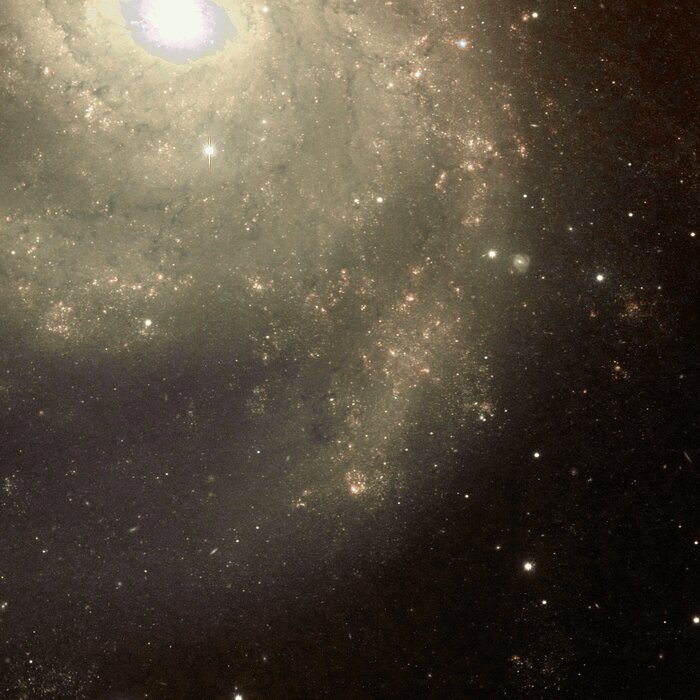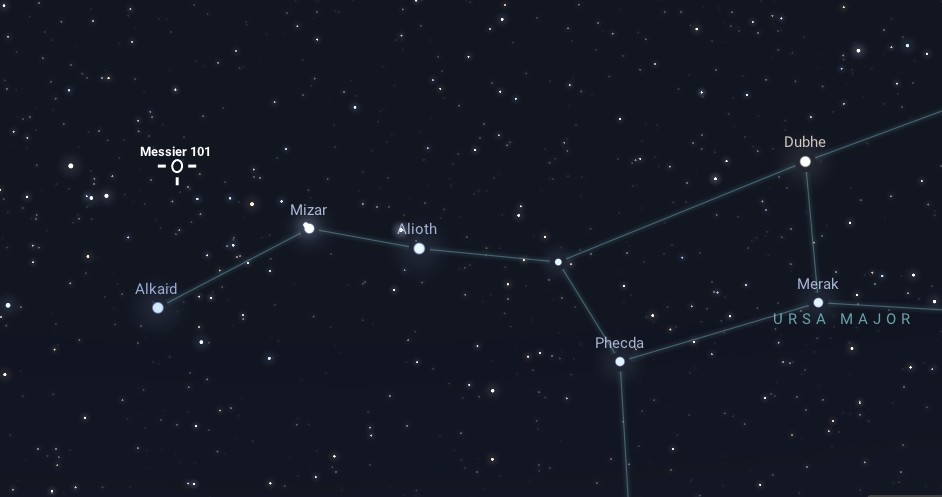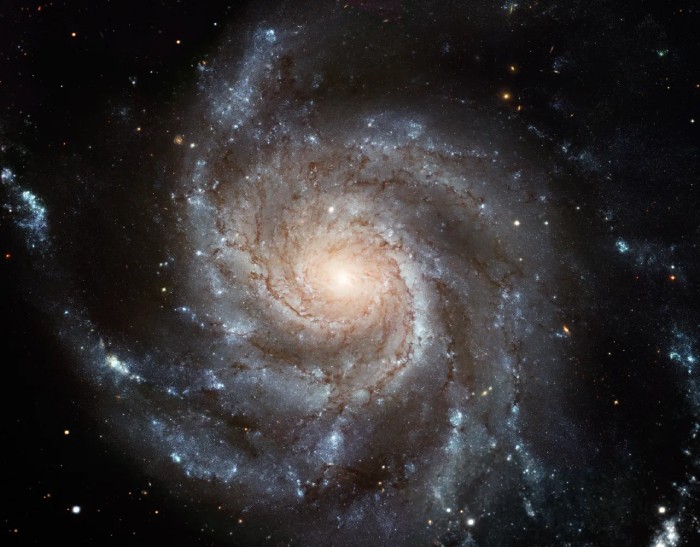The Pinwheel Galaxy, also known as Messier 101 (M101) or NGC 5457, is a stunning example of a grand design spiral galaxy located in the constellation Ursa Major. Discovered by Pierre Méchain on March 27, 1781, and later added to Charles Messier’s catalog, M101 is one of the largest and most magnificent spiral galaxies visible from Earth. It lies approximately 21 million light-years away and has an impressive diameter of about 170,000 light-years, making it almost twice the size of our Milky Way.
Structure and Appearence
M101 is notable for its nearly face-on orientation as seen from Earth, which provides a spectacular view of its well-defined spiral structure. The galaxy features prominent, sprawling spiral arms that are rich in young, blue stars and regions of active star formation. These arms are dotted with numerous H II regions, which are large clouds of ionized hydrogen where new stars are being born. The bright, knotty appearance of these regions is due to the intense radiation from hot, young stars, which ionizes the surrounding gas.
The central region of M101 is less defined compared to its outer arms, but it contains a bright nucleus that hosts older, redder stars. Unlike some other spiral galaxies, M101 does not have a pronounced central bulge; instead, its disk is relatively flat and uniform. This structure suggests that the galaxy has experienced interactions and mergers with smaller satellite galaxies, which have influenced its current form and triggered waves of star formation across its disk.

Scientific Study
In addition to its visual appeal, M101 has been a subject of extensive scientific study. Its distance and relatively unobstructed view make it an excellent laboratory for studying the processes of star formation and the structure of spiral galaxies. M101 also played a role in the calibration of the cosmic distance scale through observations of Cepheid variable stars within the galaxy. These stars, whose brightness varies in a predictable manner, have been used to measure distances to other galaxies, aiding in our understanding of the scale and expansion of the universe.
Overall, the Pinwheel Galaxy is a quintessential spiral galaxy that captivates both astronomers and casual observers with its beauty and complexity. Its grand design, star-forming regions, and role in astronomical research make it a key object of interest in the study of the cosmos.
Observation
M101’s apparent magnitude is around 7.9, making it a rewarding target for amateur astronomers with small to medium-sized telescopes. Under dark skies, it can be seen as a faint, diffuse patch of light, but its full splendor, including its spiral arms and star-forming regions, is best appreciated through long-exposure astrophotography. The galaxy’s angular size of about 28 arcminutes means it covers nearly the same area of the sky as the full moon, further highlighting its vastness.
Under excellent viewing conditions it can also be glimpsed in 50mm binoculars. Using averted vision—looking slightly to the side of where M101 is expected—can help detect the faint galaxy. This technique takes advantage of the more light-sensitive parts of the retina.
The Pinwheel Galaxy is best observed during the spring and early summer months in the Northern Hemisphere, specifically from March to May. During this period, the galaxy’s host constellation, Ursa Major or the Big Dipper, is high in the night sky, making it easier to locate and observe.

In April, M101 starts to rise higher in the sky as the night progresses. This is a good time to start observing it as it reaches a more favourable altitude. May provides optimal viewing conditions, as M101 reaches its highest point in the night sky, offering the best visibility and reduced atmospheric interference.
To find M101, you can use the stars in the handle of the Big Dipper as a guide. If you follow the line created by the last two stars of the handle, Alkaid (Eta Ursae Majoris) and Mizar (Zeta Ursae Majoris), and extend it further, you will come close to the location of M101.



